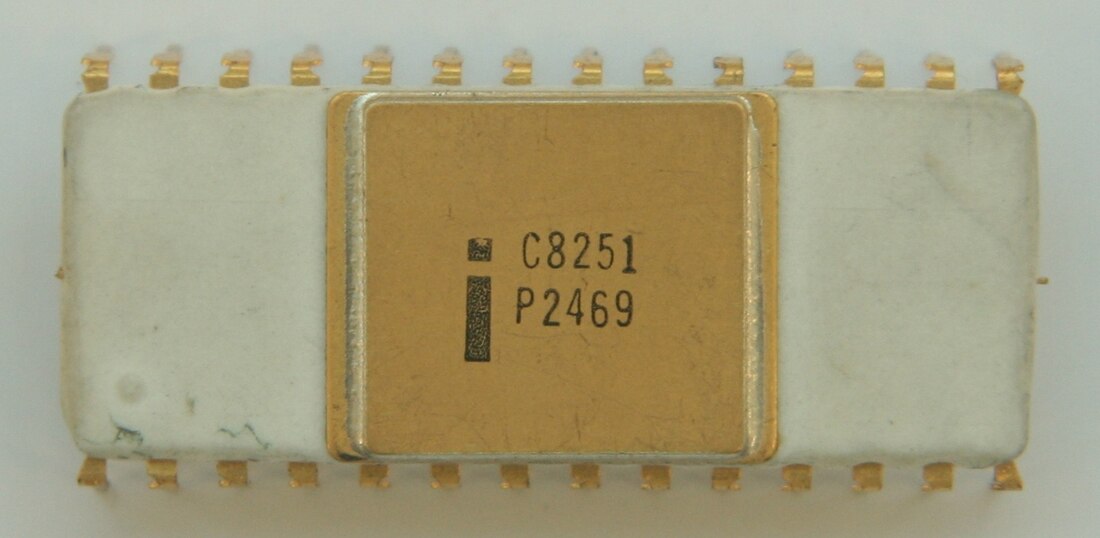Intel 8251
From Wikipedia, the free encyclopedia
The 8251 is a Universal Synchronous/Asynchronous Receiver/Transmitter (USART) packaged in a 28-pin DIP made by Intel. It is typically used for serial communication and was rated for 19.2 kilobits per second signalling rate.

It is commonly confused with the much more common 8250 UART that was made popular as the serial port in the IBM Personal Computer.
It includes 5 sections:
- read/write control logic
- transmitter
- receiver
- data bus system
- modem control
Variants
- In quantities of 100 and up
Known uses
The Intel 8251A was used in the Intel SDK-86 MCS-86 System Design Kit[3] and the DEC LA120 printing terminal.[4] The device is also used in the IC-10 RS-232 interface kit used in Kenwood amateur radios like the TS-440S, TS-711, TS-811 and many others.
External links and references
Wikiwand - on
Seamless Wikipedia browsing. On steroids.
